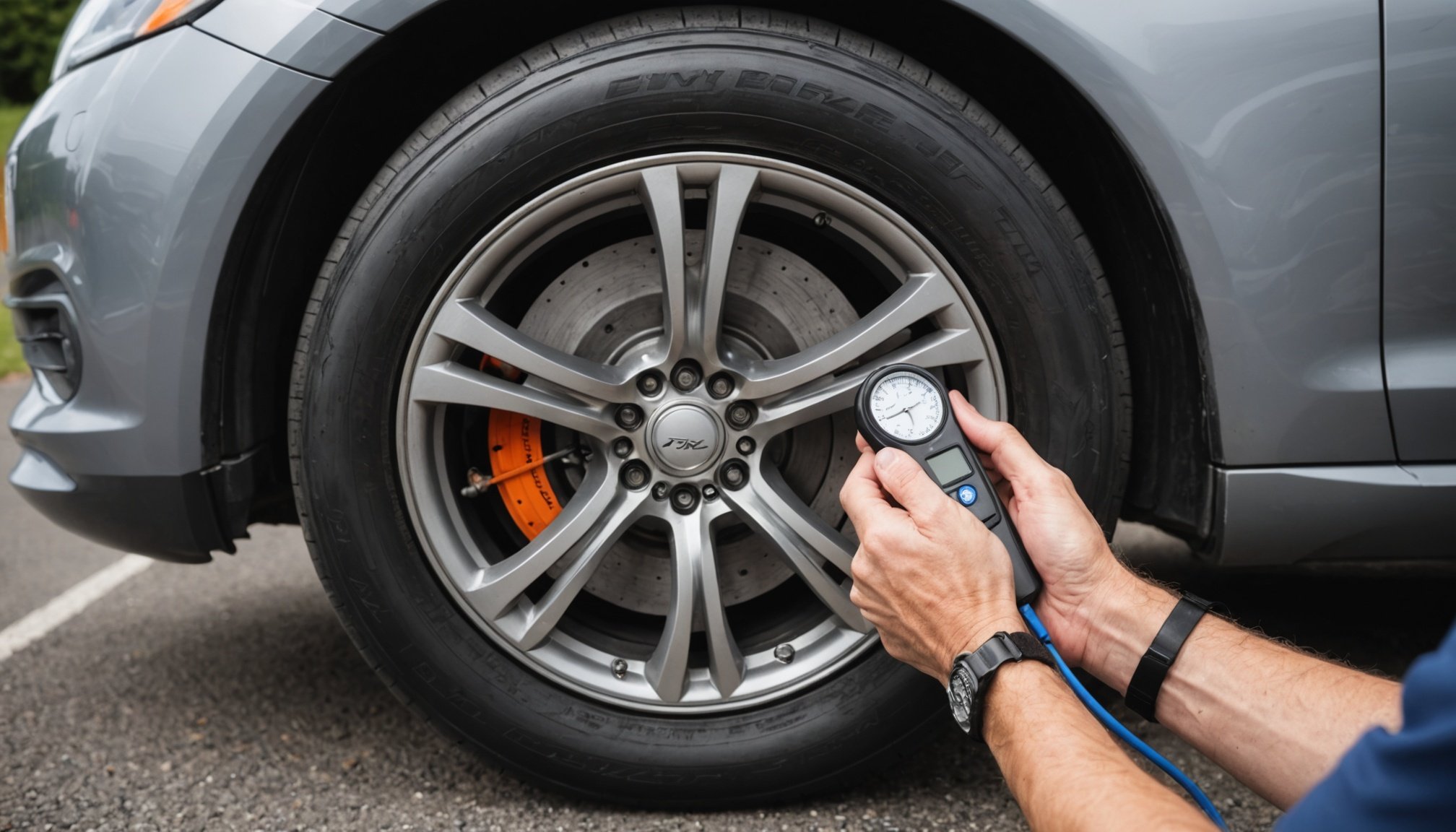Importance of Proper Tire Pressure in Heatwaves
Maintaining correct tire pressure is crucial, especially during a heatwave when temperatures soar. Extreme heat can cause air inside inflatable tires to expand, leading to a dangerous increase in pressure. This can impact not only your car’s performance but also your safety. Proper tire pressure maintenance is essential to prevent issues such as blowouts, which can occur more frequently when tires are over-inflated during hot conditions.
Heatwave safety becomes a vital consideration when driving because fluctuations in temperature significantly affect tire performance. Proper inflation ensures optimal road contact, improving traction and handling even on hot surfaces. This is especially important for lightweight cars, which may have different tire pressure requirements than heavier vehicles. Adequate tire pressure helps keep such vehicles stable and responsive, reducing risks associated with sudden braking or swerving.
This might interest you : Crucial safety tips for safely altering cargo barriers in commercial vans
Neglecting tire pressure maintenance during a heatwave can lead to various issues. Under-inflated tires, for instance, increase rolling resistance, leading to higher fuel consumption and wear. Therefore, regularly checking and adjusting tire pressure—especially in hot weather—is an essential part of vehicle maintenance that cannot be overlooked.
How to Check Tire Pressure
Regularly checking tire pressure is vital for maintaining optimal vehicle performance and safety, especially during heatwaves. High temperatures can cause air in inflatable tires to expand, creating the need for frequent pressure adjustments.
Additional reading : Ultimate handbook: safely upgrading your rearview mirror in vehicles with advanced driver assistance systems (adas)
Tools Needed for Checking Tire Pressure
To properly measure your tire pressure, you’ll need a tire pressure gauge. These handy devices ensure you identify any deviations from the recommended pressure levels.
Digital tire gauges are especially user-friendly, providing clear readings, while analog ones offer simple functionality without requiring batteries. Having this essential tool readily available empowers you to stay on top of tire health.
Steps to Accurately Measure Tire Pressure
Follow these straightforward steps to ensure precision:
- Cool it Down: Try to check your tire pressure when the tires are cold, ideally after they have been stationary for a few hours.
- Be Ready: Unscrew the valve cap and position your tire pressure gauge onto the valve stem.
- Read Carefully: Note the reading instantly for accuracy, comparing it against your vehicle’s recommended tire pressure levels found in the owner’s manual.
- Adjust if necessary: Inflate or deflate the tire as needed to match the recommended specifications.
This process helps maintain optimal tire conditions, promoting safety and efficiency.
Adjusting Tire Pressure for Lightweight Cars
When driving a lightweight vehicle, adjusting tire pressure appropriately is crucial to ensure optimal performance and safety. Lightweight cars often have specific tire pressure needs, varying by model and tire type, which become even more critical during hot weather conditions. During a heatwave, the air inside inflatable tires can expand significantly, requiring careful monitoring and adjustment of tire pressure.
To maintain lightweight vehicle performance, be aware of the manufacturer’s recommended tire pressures and adjust them as necessary in response to temperature changes. Higher temperatures can cause over-inflation, impacting the car’s stability and road grip. Additionally, consider the type and size of your tires, as these factors also influence the necessary adjustments.
When increasing or decreasing tire pressure, take into account both the current ambient temperature and any forecasted weather changes. This proactive approach will help avoid potential risks associated with variations in tire inflation, such as blowouts or loss of control, ensuring a safer driving experience. By staying informed and responsive to the temperature impact on your tires, you can uphold the best practices for tire maintenance and safeguard your lightweight vehicle.
Tips for Maintaining Tire Pressure During a Heatwave
During a heatwave, proper tire maintenance is vital to ensure both safety and performance. Hot weather can lead to increased tire pressure, potentially causing blowouts if not adequately monitored.
Best Practices for Tire Maintenance
- Regular Monitoring: Check your tire pressure more frequently during extreme heat to address any unexpected changes. Tires are prone to expansion with rising temperatures, calling for regular adjustments.
- Avoid Over-Inflation: When inflating tires, consider the temperature. Over-inflating can be as dangerous as under-inflating, leading to potential blowouts.
- Understand Your Vehicle: Each vehicle has specific tire pressure recommendations. Follow the guidelines found in the owner’s manual.
Avoiding Common Mistakes
Avoid inflating tires immediately after driving, as heat from driving can give a false pressure reading. Let the tires cool down to achieve an accurate measurement.
Monitoring Tire Pressure
Incorporate extreme weather protocols by using a tire pressure gauge to ensure your tires remain within recommended levels. Keeping a vigilant eye on tire performance will enhance safety and reduce the risk of tire-related incidents during a heatwave. Regularly inspecting tires can prevent damage and maintain optimal vehicle operation.
Safety Measures for Driving with Correct Tire Pressure
Maintaining safe driving practices during heatwaves starts with ensuring optimal tire pressure. Properly inflated tires are crucial for your vehicle’s braking and handling capabilities. Under-inflated or over-inflated tires compromise automotive performance, making steering less responsive and increasing the stopping distance. This is particularly important during high temperatures when road conditions can be unpredictable.
Recommended Driving Practices in Heatwaves:
- Monitor Tire Pressure: Use a tire pressure gauge to check tires regularly. Precision in adjusting and monitoring tire pressure is key to safety.
- Drive Smoothly: Minimise harsh braking and sharp turns to preserve tire integrity. Reduced sudden movements improve traction and control.
- Reduce Speed: Maintaining a slower speed reduces heat buildup in tires, preventing excessive expansion or contraction.
Signs Indicating Tire Pressure-Related Issues:
Keeping an eye out for certain signs can preemptively catch tire pressure problems. Look for uneven tire wear, vibrations when driving, or a warning light on the dashboard. Address these symptoms promptly to maintain tire safety and ensure an enjoyable driving experience even in challenging conditions. Regular checks and adjustments not only secure your journey but extend the life of your tires.
Addressing Common Misconceptions About Tire Pressure
During temperature fluctuations, tire pressure myths can lead to misinformed practices, impacting safety and vehicle performance. Understanding these myths is crucial for accurate maintenance.
Myths vs. Facts About Tire Inflation
A common myth suggests you should inflate tires to the maximum pressure listed on the tire sidewall. However, this is incorrect. The sidewall indicates the maximum capacity, not optimal. Your vehicle’s manual provides the best guidelines.
The Truth About Over-Inflating Tires
Over-inflating improves fuel efficiency is another misconception. In reality, it compromises grip and handling capabilities. Reduced contact with the road increases stopping distances, particularly hazardous during heatwaves. Optimal pressure balances performance and safety effectively.
Clarifying Recommendations for Tire Pressure Check Frequency
Frequent checks are essential, particularly during heatwaves. Some believe monthly checks suffice, yet weekly monitoring ensures accurate readings. Given temperature effects, this proactive approach prevents potential risks and prolongs tire health.
Addressing these misconceptions helps maintain optimal tire pressure and enhances overall driving safety. Knowledge of accurate tire practices boosts confidence and supports effective maintenance habits.
The Importance of Regular Tire Maintenance
Regular tire care is critical for ensuring overall vehicle safety and performance. Routine preventive maintenance not only enhances tire health, but also optimises safety across various driving conditions beyond just temperature fluctuations. When tires are well-inflated, they reduce rolling resistance, improve fuel efficiency, and enhance overall durability.
Maintaining appropriate air levels ensures that tires wear evenly, which extends their lifespan and provides a smoother and quieter ride. Beyond that, keeping an eye on tire condition helps prevent issues like blowouts and tread separation, which can pose severe safety risks if left unaddressed.
Incorporating preventive maintenance routines also addresses potential alignment and suspension issues that could otherwise degrade vehicle reliability. Regular checks ensure that tires maintain optimal road contact, enhancing grip and handling.
By prioritising tire care, you contribute to overall vehicle safety and gain peace of mind knowing that your vehicle is in prime condition for both ordinary and extreme driving situations. Effective maintenance practices foster enhanced safety, reliability, and cost-effectiveness, encouraging proactive vehicle management through consistent attention to tire condition.











